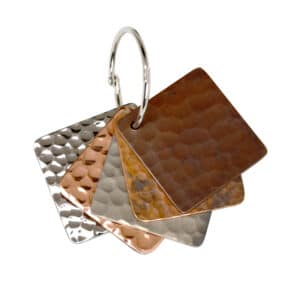The Making of a Mood Board: 5 Designers Weigh In on Their Favorite Techniques
Mood boards can be a valuable resource throughout the process of an interior design project. From organizing inspiration to keeping style and aesthetic consistent, a mood board can assure that a project stays on track. Not to mention, they’re loads of fun, too. Discover how top designers create theirs, here – plus, learn about the many ways you can use our Native Trails finish samples in yours.
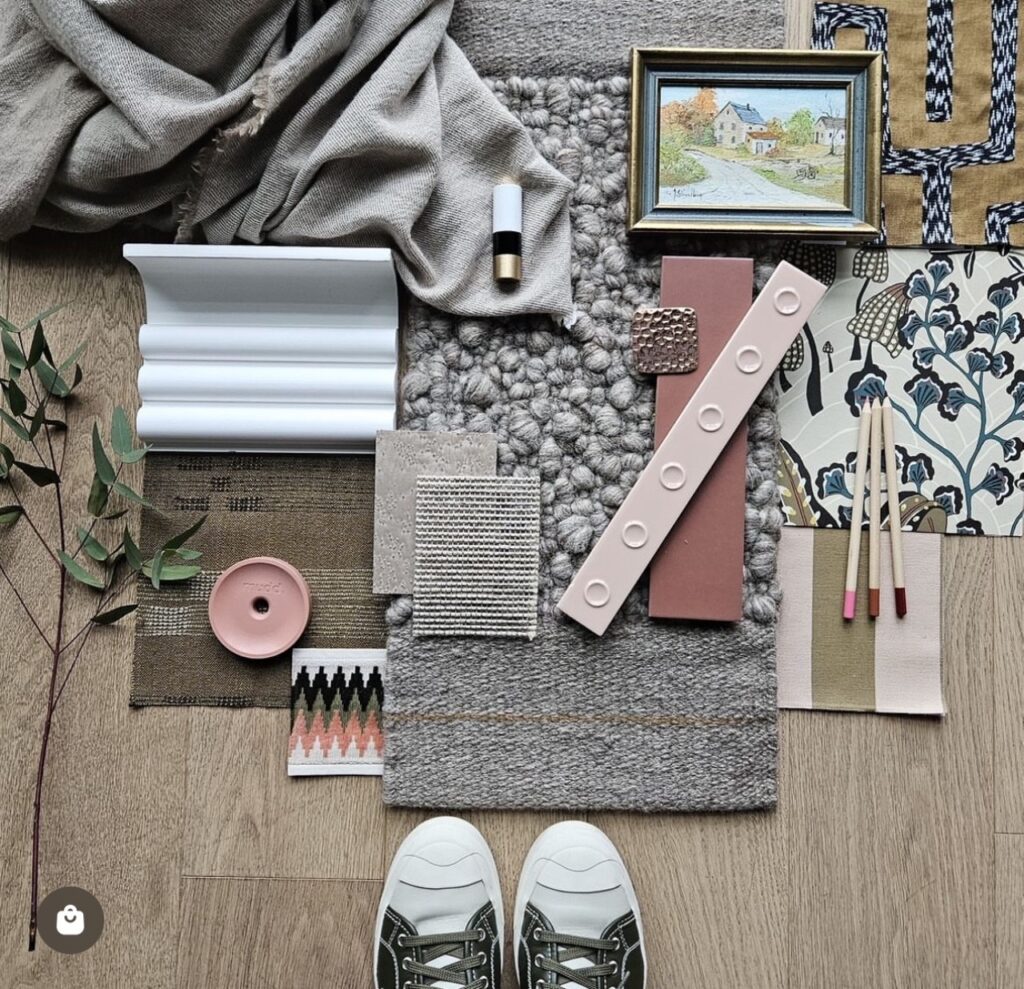
Pictured here: Native Trails Polished Copper finish sample.
Mood Boards. Whether you’re a DIYer, hobbyist or professional interior designer, this tool is made for scheming, envisioning and showcasing your ideas. But mood boards are as unique as their makers. Some are digital while others are physical. Some are a sparse collection of samples and swatches, while others are a riot of textures, materials and items. Some are tacked up on a wall while others occupy a surface and are then photographed; this is what they call “a flat lay.”
A visual feast for the eyes, mood boards represent the germination stage of creativity. Before anything has blossomed, the mood board sets our best intentions for a room. At Native Trails, we love to see our finish samples add texture and soul to your designs. Please keep tagging us in your #MoodboardMonday and #FlatLayFriday posts. They make us smile and inspire us every single time.
Here are five top interior designers on how the mood board fits into their creative process.
1. Mark Sikes: Physical mood boards with thumbtacks, tear sheets and fabric and trim samples
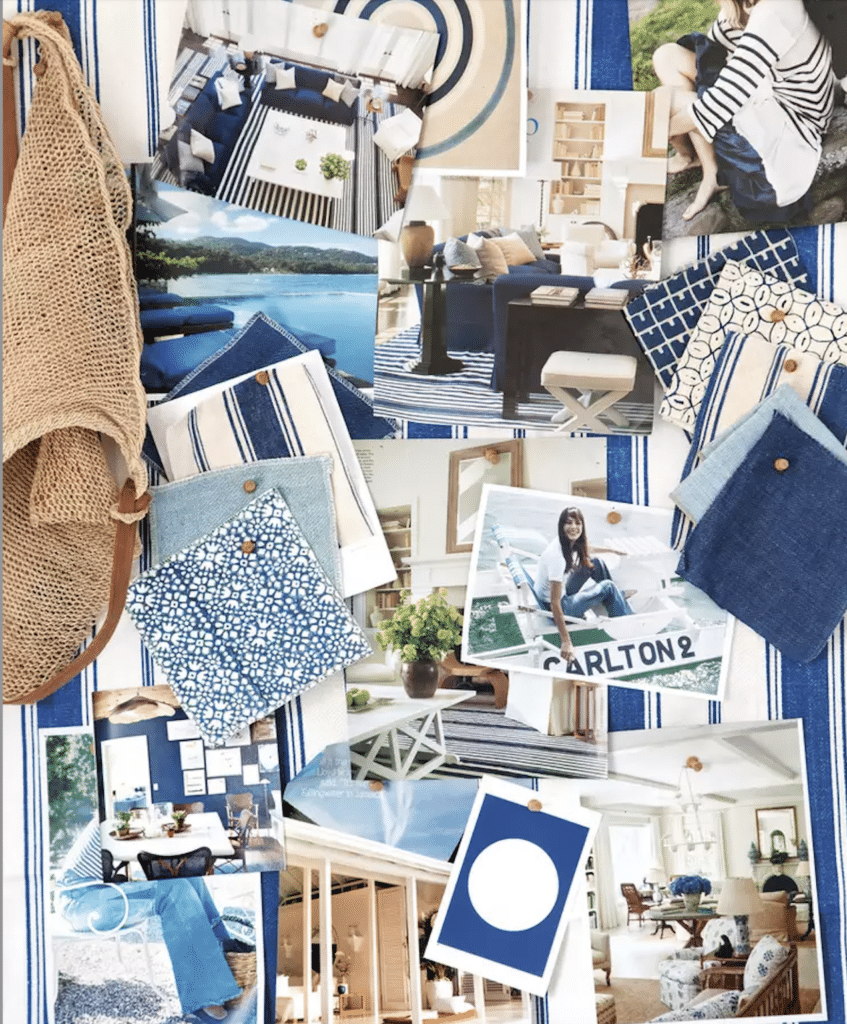
Photographer: Amy Neunsinger
Mark Sikes is a celebrity designer, with his portfolio including high-profile clients such as Reese Witherspoon and First Lady Jill Biden. But his celebrity status extends even further; Sikes created the iconic coastal grandmother movement with his Nancy Meyers’ movies set designs.
Sikes’ physical mood boards are iconic and are featured heavily in both of his books, “Beautiful” and “More Beautiful.”
The All-American designer, known for his classic blue-and-white palettes, starts every project – whether it be residential or a collaboration – with a mood board. He told Farrow & Ball, “The design process truly starts with the client’s vision for what they want their home to look and feel like, influenced by what they already know of my style.
After we create furniture floorplans to define the function and flow of different spaces, we then tackle our creative process, which is driven by inspiration pictures, key fabrics and colors. That creates the palette and direction for the house. Once the palette is finalized, we create a mood board for each room with specific furniture, lighting, rugs, wall treatments and creative applications. We like making physical mood boards with thumbtacks, tear sheets and fabric and trim samples.”
2. Sagrada Studio: Pin with reckless abandon and look for the patterns
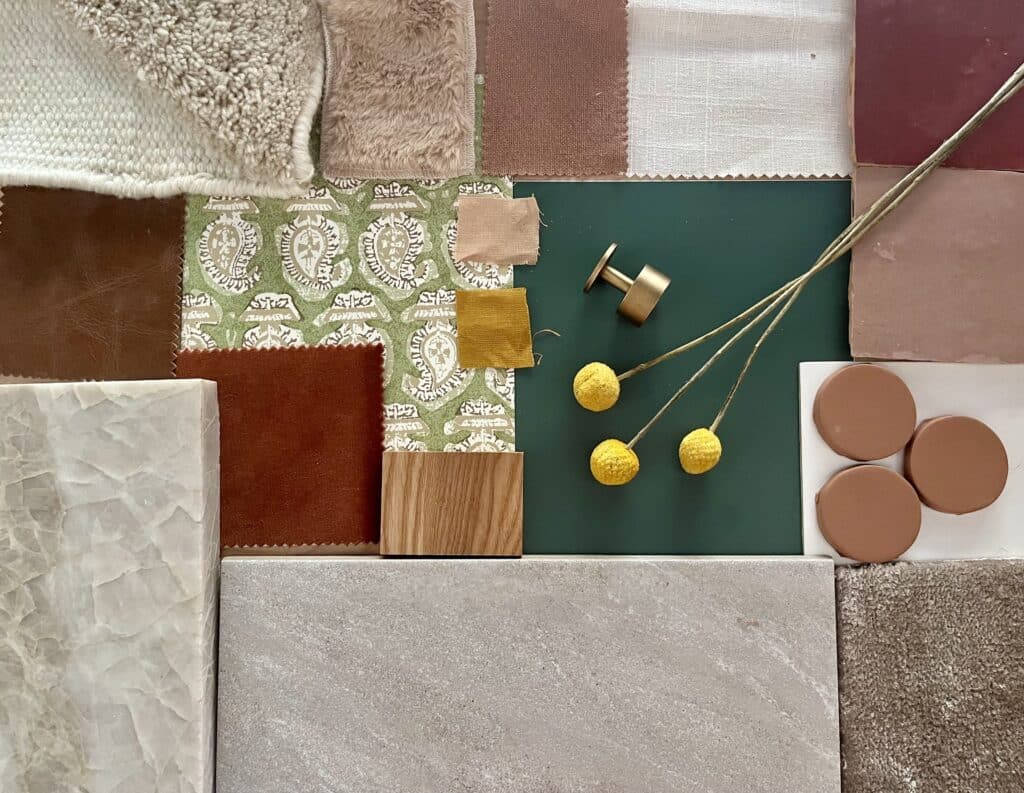
Depending on the designer we talked to, we came across preferences for creating mood boards in PowerPoint, Canva, Google Slides, Houzz Pro, Spoak, Adobe and even Microsoft Word. The options for where to create a mood board are nearly endless, but we found that AD PRO has a great article rounding up some of the top software options for interior designers, today.
Many designers say they like to kick off the design process by poring over their clients’ existing mood boards (i.e., their Pinterest boards).
“Mood boards are our step one after we get a client,” says Sagrada Studio founder Hema Persad. We ask them for their own inspiration images because every client has some, usually on Pinterest. Then we look at what they’ve sent us, and it’s up to us to pull out that what they’re really thinking. What I’ve noticed is when clients are making their own mood boards, there’s always a pattern. If you just look at what they’re sending you, there’s something there that they keep doing that they’re not realizing.”
What’s Hema’s advice for homeowners who want to create a mood board without the help of a designer? “I’d say, pin with abandon — just pin, pin, pin, pin, pin and, and go crazy, right? Whatever speaks to you, just do it. Eventually, a pattern will emerge. You will see you’re going to start pinning the same types of tile, the same colors, the same textures.
When you realize what those patterns are, you need to really go hard. If you keep pinning blue accent walls, dig deeper. Why don’t you look at blue rooms? If you like burgundy kitchen cabinets, dig deeper. Why don’t you see how burgundy feels in different spaces? So you cast a wide net, look for the patterns, and then be brave and dig in.”
Read our interview with Hema, here.
3. Amy Neunsinger: Don’t be afraid to put in strange stuff
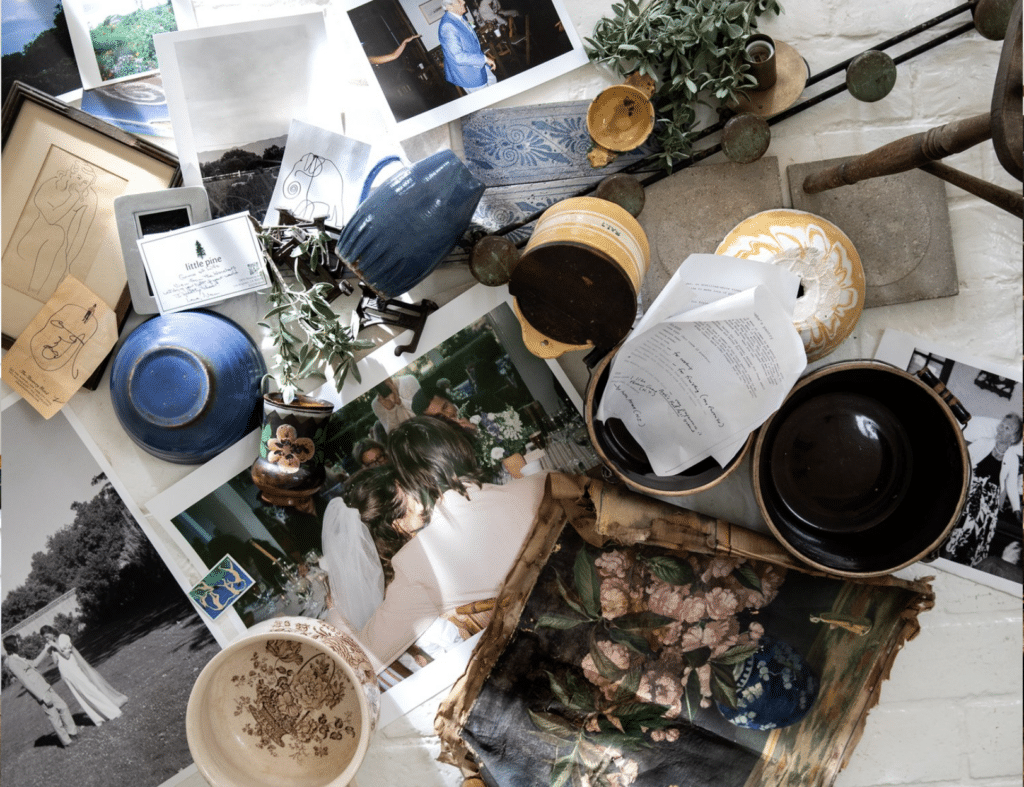
Photographer: Amy Neunsinger
Every episode of Amy Neunsinger and Kate Martindale’s show “Capturing Home” begins with them creating a massive and gorgeous flat lay — a smorgasbord of art, pottery, plants, photographs, tiles, textiles and more.
Amy tells us, “When we put together a mood board for a client, you really have to get in their head. You listen, and you gather stuff from them. From there, it’s like a ping pong game. You have what they’ve said, what they’ve given to you. Then you add items that play off each other: textures, colors, patinas.
Some of the items that we put in a mood board are really strange. But if it offers a visual language, we’ll put a strange pot in there. You’ll then see it translated down the line in a patina for something that we’ve added. So don’t be afraid to put anything in the mood board if it offers some visual clue or beauty. First of all, it needs to be beautiful. And that beauty then transcends and helps you come up with your design.”
Read our interview with Amy, here.
4. Atelier Davis: Try Google Slides to make collaboration simple
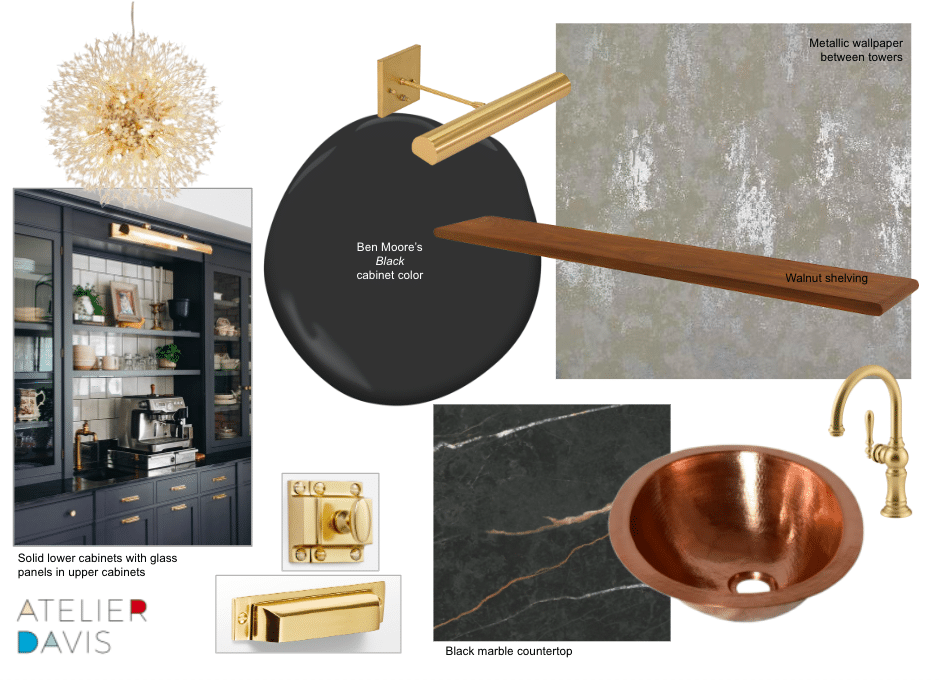
Pictured here: Native Trails Baby Classic Bathroom Sink in Polished Copper
Jessica Davis, whose studio Atelier Davis has offices in Atlanta, Georgia, and South Orange, New Jersey, dutifully posts Moodboard Monday features on her blog — you can find dozens of them showcasing her plans for both residential and commercial spaces. Often, she presents two visions for a single room. The mood board shown here, says Jessica, is for “a primary bath scheme that echoes the clean lines and organic forms present throughout the rest of the home. Matte black fixtures play off the warm wood tones of the cabinets and flooring, and reeded glass serves to define each space in this dreamy bath.”
Jessica uses Google Slides to create her mood boards. “We like using them because they are super collaborative. You can add comments and tag team members and people can make changes concurrently,” she says. “It’s important to pull physical samples of materials and finishes but a digital mood board also allows you to show concept imagery and pictures of fixtures, etc.”
5. Leanne Ford: Create a tactile masterpiece
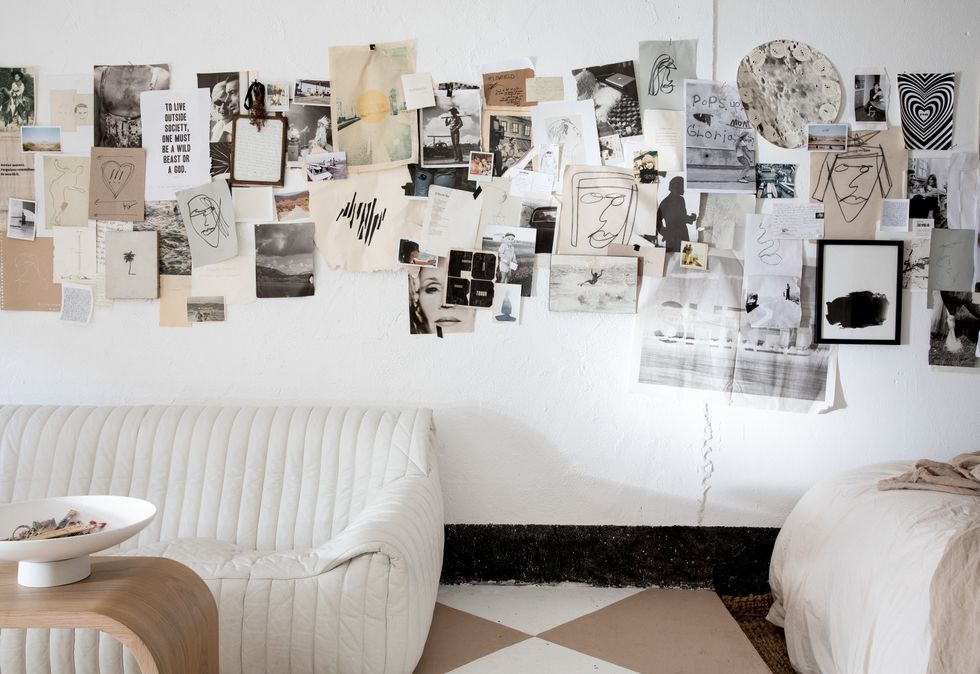
Photographer: Amy Neunsinger
“I love a collage, I love a mood board,” says the inimitable Leanne Ford on the “Being Home with Hunker” podcast. Ford’s mood boards have long been tactile masterpieces that double as art installations. The one pictured above was installed in a guest room of one of her homes.
“I save anything at any time that I feel drawn to in any way,” says Ford. “Sometimes it’s inexplicable, and sometimes it’s because I like the way they laid out the furniture. As a creative soul, sometimes you have so much to give out. And sometimes you’re just inputting. Whenever it’s input time, I read all of my magazines, rip all my tear sheets and do a ton of Pinterest and save it for a rainy day.”
Ford loves a mood board so much that she made her magazine, “Feel Free,” so that the pages are made to be torn out and turned into mood boards of their own. “I wanted it to feel loose and not so precious,” she says. “It’s a tactile experience.”
Read our fascinating interview with Leanne Ford here here.
Click to order Native Trails finish samples.
